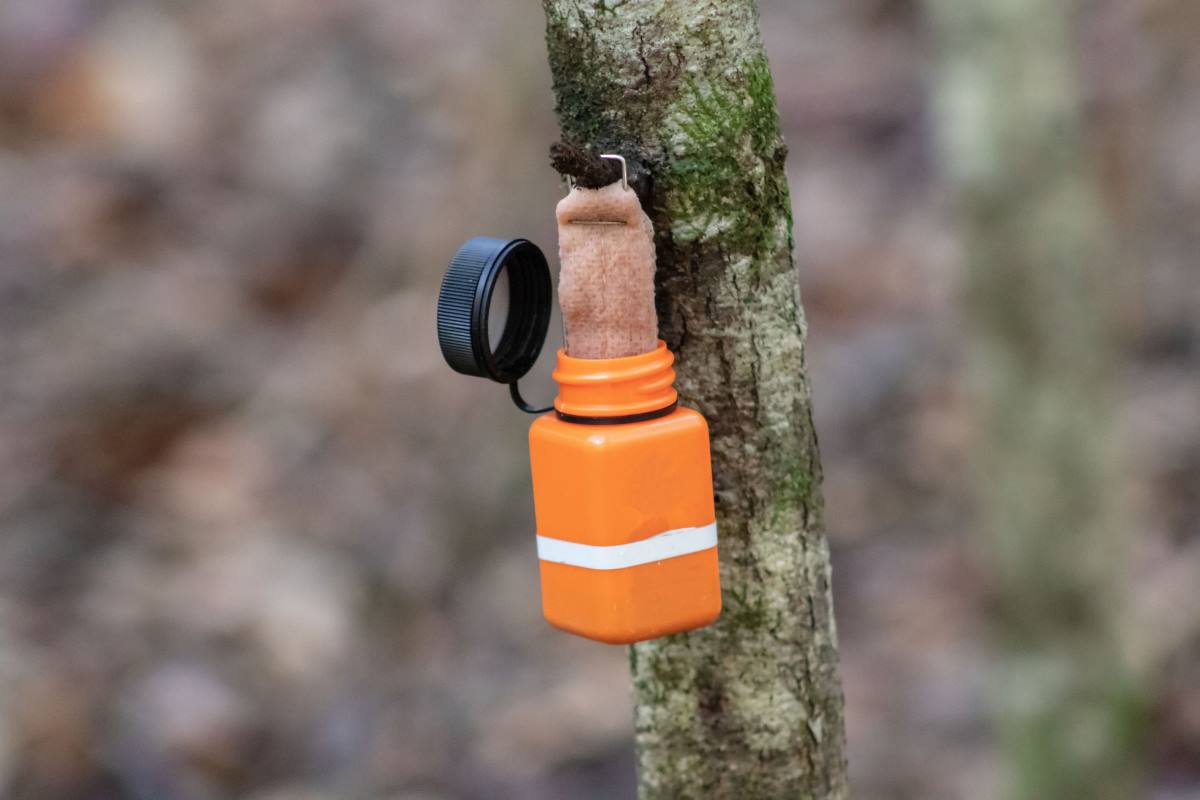Mastering Scent Control Whitetails365

Mastering Scent Control Whitetails365
In the world of whitetail deer hunting, few factors are as critical to success as scent control. When it comes to mature trophy-class whitetail, they live by their nose, and human scent is the most intrusive smell they encounter. Whitetail deer possess an extraordinary sense of smell, estimated to be many times more acute than a human. Their noses contain an estimated 297 million olfactory receptors, a stark contrast to our meager 5-10 million.
There have been recent studies suggesting that deer have even more olfactory receptors than the meager 297 million. This biological advantage means that a single careless mistake—a stray whiff of human odor, gasoline, or even a foreign laundry detergent—can instantly alert a mature buck to your presence, sending him scurrying in the opposite direction. For this reason, a meticulous and systematic approach to scent control isn’t vital if you plan on hunting big, mature bucks.
It Starts at Home
The first and most crucial step in any scent control regimen begins long before you ever set foot in the woods: in your home. The process starts with a thorough cleaning of both yourself and your hunting gear. This is where a dedicated system of scent-free products becomes invaluable. Begin with a shower using scent-free soap and shampoo. These products are specifically formulated to eliminate human odors without leaving behind any tell-tale fragrances that could alert a deer. After your shower, it’s wise to wipe down with unscented wipes to ensure that every last trace of foreign odor is removed from your skin.
Your clothing and gear are the next frontier. The goal is to ensure that everything you wear into the woods is as free of human and environmental odors as possible. Depending on your regimen, you might wash or run your gear through ozone regularly. Remember running your clothes with ozone too often or long may ruin the elasticity of the clothes. I will wash hunting clothes after every single use; I don’t like to let them go very long without washing my clothes.
While this might lead to some wear and tear on the clothing over time, the payoff in scent control is well worth it. When washing, use a scent-free detergent and, if you use a dryer, opt for an earth-scented or completely unscented dryer sheet. Even better, air-dry your clothes in a clean, outdoor area where they won’t pick up any odors from your home or garage. To further a scent-free drying process, consider running a round of unscented laundry through your washer and dryer before your hunting clothes to eliminate any lingering detergent or fabric softener smells.
Boot Care
When it comes to boots, rubber boots are often preferred over leather because they are less porous and less likely to absorb and retain human odors. To combat foot odor, which can be a significant scent source, use a scent-free powder in your boots and on your socks. Keep your hunting boots exclusively for hunting and wash them when needed. Baking soda can also be used as a simple and effective odor neutralizer inside your boots.
Storing You Clothing
Once your hunting clothes are clean and dry, they must be stored in a scent-free environment. This is where dedicated scent-free bags or airtight containers, such as Rubbermaid tubs, become essential. To take this a step further, many hunters place scent-absorbing wafers or scent-eliminating charcoal pouches inside these containers to actively neutralize any odors. Before storing your clothes, give them a final spritz with a scent-free spray and allow them to air dry completely to ensure the spray has time to work its magic.
The journey to the hunting location itself is a potential minefield of scent contamination. To avoid this, it’s a good practice to avoid wearing your hunting clothes and boots in your vehicle. Instead, store them in a scent-free bag and change into them as close to your stand as possible. Another critical, yet often overlooked, detail is fuel. Gasoline vapors can cling to your clothing and gear for hours. To prevent this, fuel up your vehicle a day or two before your hunt, allowing those potent vapors to dissipate.
Ozone Technology
The use of Ozone technology has also become a popular tool in a hunter’s scent control arsenal. Companies now produce special bags, lockers, and portable units that use ozone to destroy odor-causing bacteria on a molecular level. While these products are effective, they are also a significant investment. It’s important not to overuse ozone, as high concentrations can break down natural rubber materials in your boots and gear over time.
Deer Lure
While eliminating human scent is the top priority, the strategic use of deer-based scents can also be a valuable tactic. It’s important to distinguish between scents. A general “herd” scent, which smells like a deer, can be used to mask human odor. There are a couple really good herd/calming scents on the market and I personally hold nothing back when applying them for use in the stand. I spray or rub the product generously on my coat, boots and pants.
Just remember to have a change of clothes when you come out of the woods, so the interior of your vehicle doesn’t smell like a whitetail deer. However, other scents like dominate buck and tarsal based scents should be used with caution and not applied directly to your clothing. When walking into your stand, a great tactic is to spray doe estrus onto a scent free rag tied to a few feet of cord and drag it as you make your way to the stand. Confidence in your chosen product is key; if a particular brand or type of scent has worked well for you in the past, stick with it. The goal is not to fool a deer, but to give them a reason to be less cautious and potentially distract them from any lingering human scent.
Clothing Selection
Finally, a note on carbon clothing. Many hunters are convinced of its efficacy, and for good reason. The military’s use of carbon in MOPP suits for protection against chemical agents is a powerful testament to its absorbing and filtering capabilities. If you do happen to purchase a military MOPP suit it will leave a fine layer of carbon dust on you, many hunters believe the benefits outweigh this minor inconvenience. The carbon clothing made specifically for hunting will not leave any sort of carbon residue on the body. A good carbon suit is an expensive investment, but it’s one that can significantly reduce your scent footprint. As with all scent control measures, carbon clothing is not fool proof, but it is another powerful tool in a comprehensive system designed to minimize your footprint.
Play the Wind
Playing the wind is arguably the most important rule of scent control. No amount of scent-free products can completely fool a whitetail’s nose if they are downwind of your position. Always check the wind direction before you hunt and choose your stand location accordingly. The goal is to position yourself so that the wind carries your scent away from the area you expect the deer to be.
Closing
By diligently following a strict scent control regimen, a hunter can get away with a lot more than they should and significantly increase their chances of success. It’s a game of inches, and in whitetail hunting, every single precaution you take to control your scent can be the difference between a successful hunt and an empty-handed walk back to the truck.
By Aaron McKinney
October 2025
Here is Last Month’s edition of Whitetails 365
Or if you are looking for the digital version of this months issue here it is below
Looking for the Cattle/Dairy side of things

